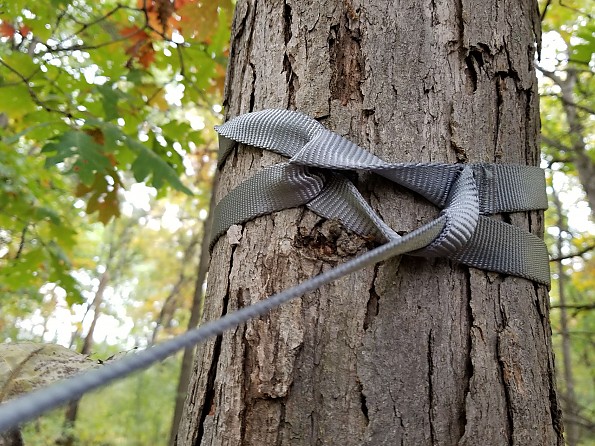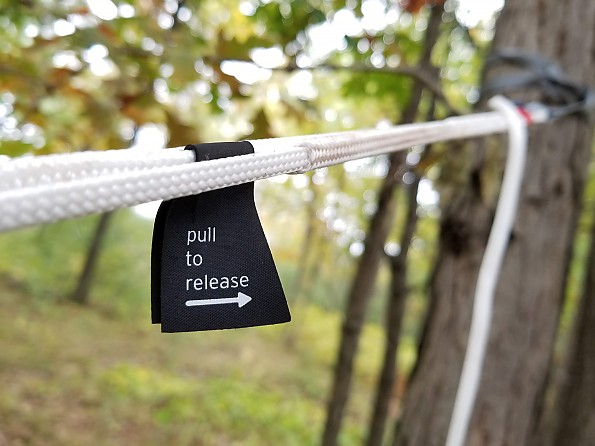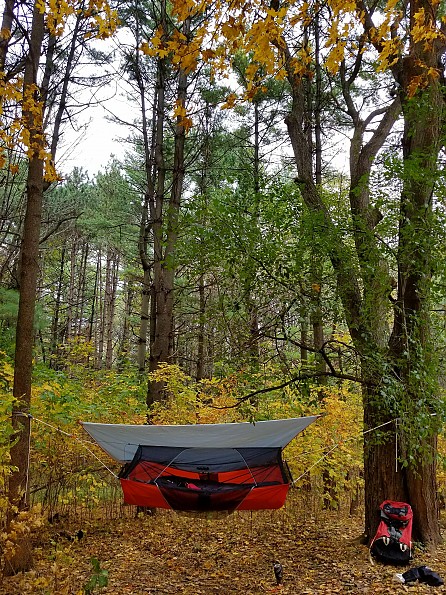REI Quarter Dome Air Hammock
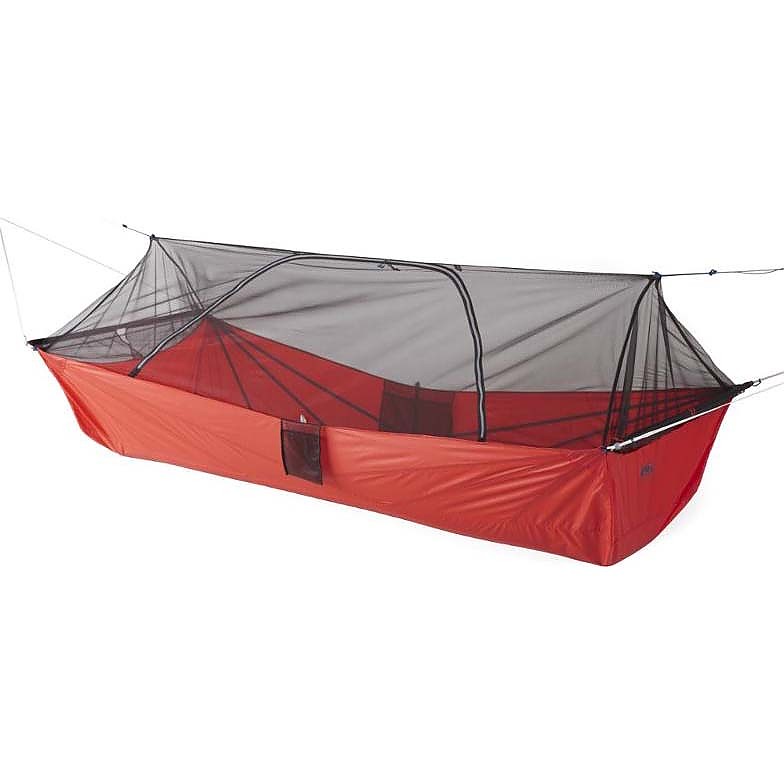
After spending several years in parachute double hammocks, the Quarter Dome Air feels like a trip to the Holiday Inn.
Pros
- Relatively lightweight (2lb 12oz)
- Easy setup
- Comfortable
Cons
- Tension locks slip sometimes
The REI Quarter Dome Air Hammock is an answer to a question that I’ve had for years; “Why doesn’t someone make a lightweight hammock with an integrated bug net, plenty of sprawl room, and completely weatherproof?”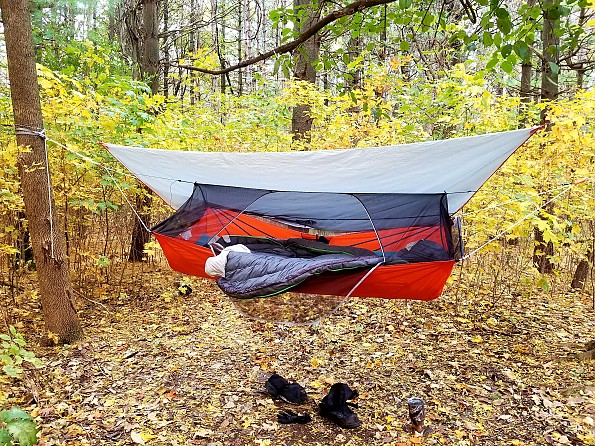
Setup:
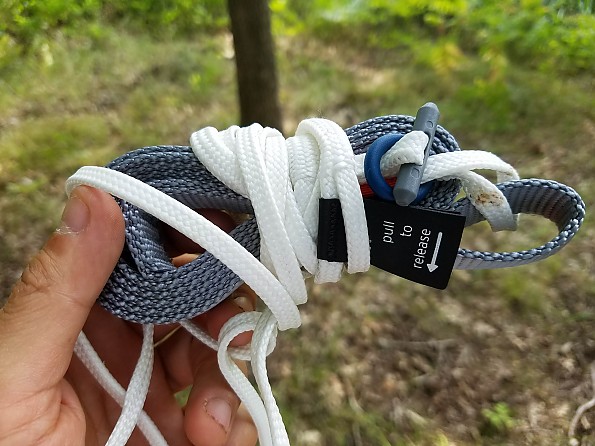 The hammock has some interesting technology with draw cords that might intimidate the first-time user at opening glance, however, the entire system is a breeze to set up.
The hammock has some interesting technology with draw cords that might intimidate the first-time user at opening glance, however, the entire system is a breeze to set up.
-
The first thing you do is take everything out of the bag.
-
Separate the items.
-
Slide the two pole pieces together on each end of the hammock
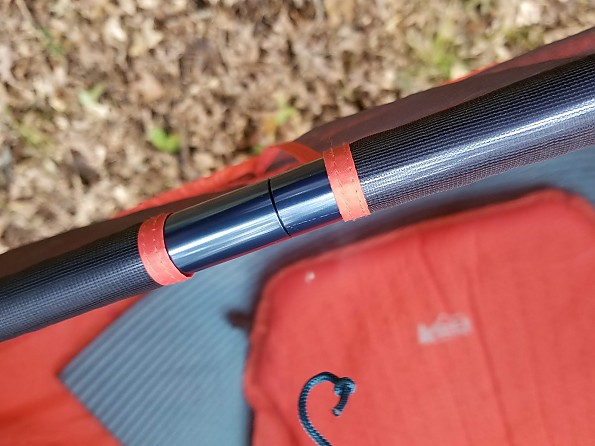
-
Connect the adjustable hammock cord to the static tree straps.
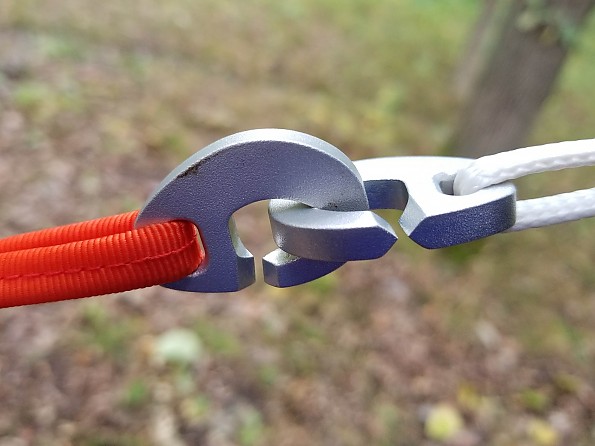
-
Pull the bug net cord tight
-
Done.
Afterwards, put up the fly if necessary. This is done by wrapping 2 tarp attached paracords around trees and then drawing them tight with a tension clip.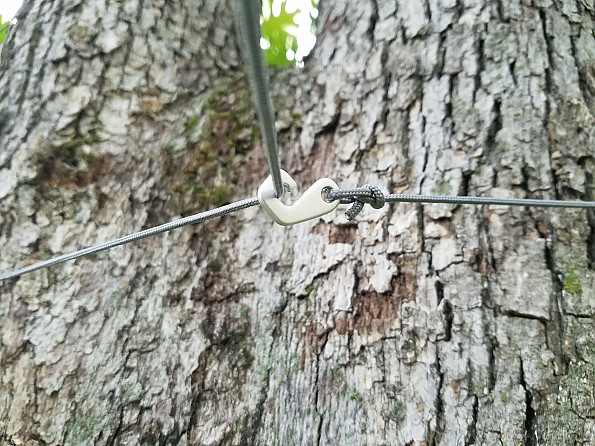
The only thing that takes some time is wrapping up the guy line cords for the fly when putting the hammock away. If you don’t do this, you’ll end up with a tangled mess of spaghetti minus the meatballs.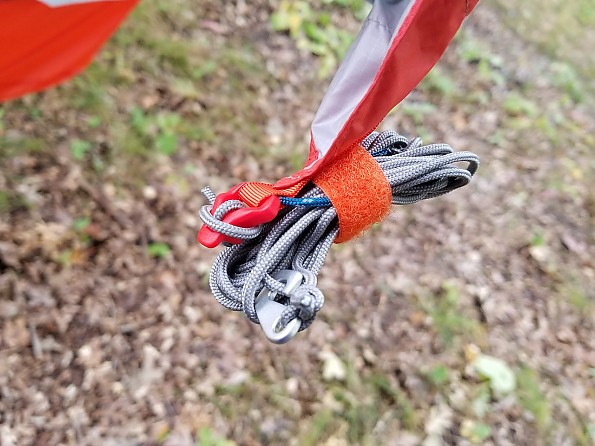
Stability:
The hammock relies on thin nylon cords for weight bearing. 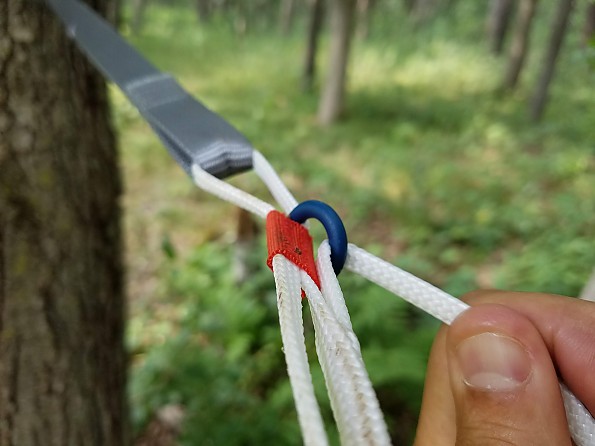 They look rather dainty but sustain an impressive amount of weight (250 lb capacity per their website). I’m not the type to play “No more monkeys jumping on the bed!” so I’m not worried about breaking the straps. I weigh 172lb (78kg) and have never had a problem.
They look rather dainty but sustain an impressive amount of weight (250 lb capacity per their website). I’m not the type to play “No more monkeys jumping on the bed!” so I’m not worried about breaking the straps. I weigh 172lb (78kg) and have never had a problem.
More often than not, when on trips with my students or my own kids and their friends, they love to sit 2-3 in a hammock at a time; it’s some sort of adolescent bonding ritual. Based on the stats, I think that this might be a bad idea for this model. Stick with one person and a utilitarian mindset.
It took me a couple of outings to get the feel of how to hang the hammock. The first time out, I hung both sides level and it felt like my head was lower than my feet. I overcompensated in my readjustment. I hung the head end strap about a foot higher than the foot strap. When I laid in the hammock, I felt just right. However, when I woke in the morning, I had slid to the foot end of the hammock.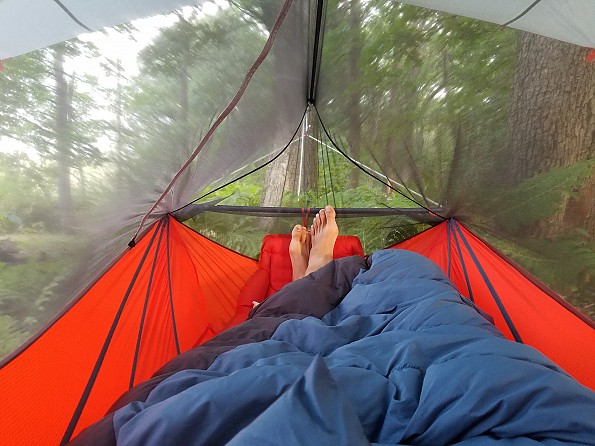
The next time, I hung the hammock level and just propped my head up a bit higher. This did the trick. I woke up without a sore neck and was perfectly situated in the center of the hammock.
On my third outing, I actually read the directions on the bag and set up the hammock accordingly. It said to hang it so you are only less than a foot off of the ground. I did this. I went to bed contented but when I woke up in the morning, I found half of my body pasted to the ground. The materials stretched during the night.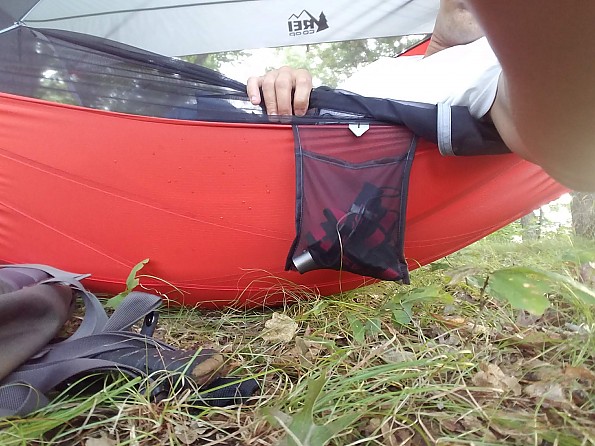 Since that experience, I’ve learned to hang my hammock so high that it looks challenging to get into it. Each time I wake up, I’m sitting a nice 2-3 feet off of the ground.
Since that experience, I’ve learned to hang my hammock so high that it looks challenging to get into it. Each time I wake up, I’m sitting a nice 2-3 feet off of the ground.
The hammock can tip if you're not centered, but it's not likely that you'd fall out for any reason except carelessness.
Comfort:
Because the hammock has poles to ensure it stays splayed, you don't have to sleep diagonally for comfort. You can basically toss and turn however you'd like and you'll wake up refreshed. 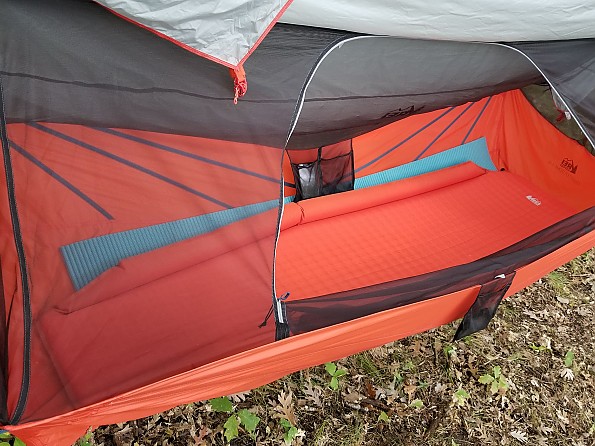
I choose to use a closed cell foam pad under a lightweight inflatable pad to keep my underside warm and padded. This seems to really eliminate any possibility of getting cold on your bum at night. The last outing with the hammock fell to the mid 30's at night and I was completely comfortable because of this particular setup. Everyone has their own preference and is willing to pack in more or less gear for a cozy night's sleep.
Weather Resistance:
The fly is just the right size to give you a foot to spare on each end so the rain doesn’t dance on your head or toes during a storm. I recently slept in the hammock during a significant thunderstorm. The noise of the patter and displaced acorns (I slept under an oak) kept me up all night, but the hammock was free of any H2O come morning. Considering that storm was about the meanest that I plan to experience in any outing, I must say that the weather resistance is effectlve. The guy lines for the fly held well in the wind. 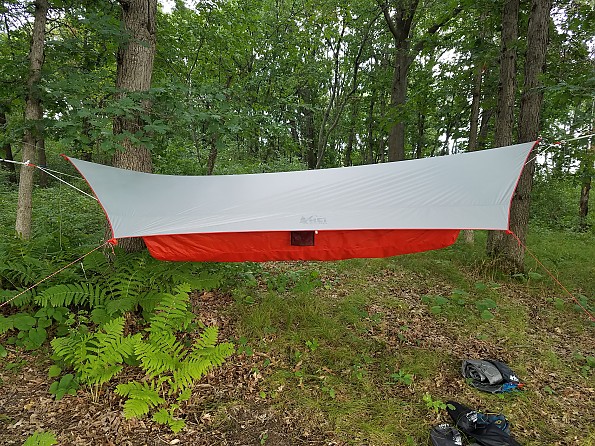
Ventilation:
The full screen top allows the user to enjoy an evening under the stars. I love watching the embers of the fire crackle through the screen. There’s a second option when hanging the hammock. You can flip it upside down so the screen is on the bottom. That way the inverted hammock is screen free.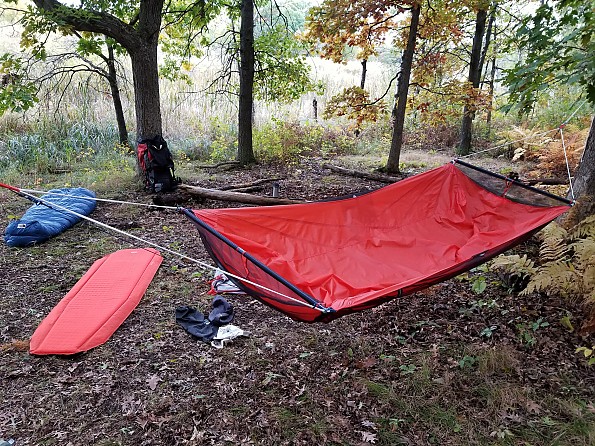
Room and Storage:
This hammock has an outside pocket (roughly 5" x 7") 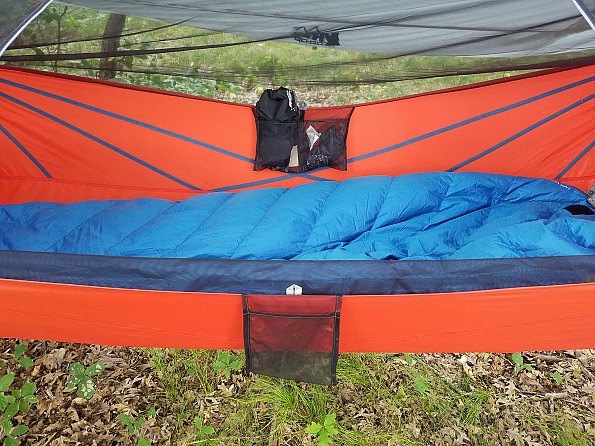 and an inside pocket that is multi-chambered. I noticed that the placement of the inside pocket is halfway down the the length of the hammock. This way, no matter which way you choose to lay your head, you can access the pocket. Because of this, it leaves your essentials right at your hip area.
and an inside pocket that is multi-chambered. I noticed that the placement of the inside pocket is halfway down the the length of the hammock. This way, no matter which way you choose to lay your head, you can access the pocket. Because of this, it leaves your essentials right at your hip area.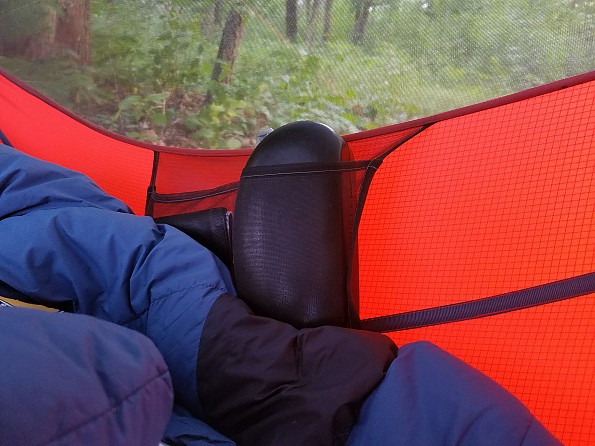 I kept rolling onto my glasses case throughout the night and it was somewhat irksome. If there was a pocket on each end, I think that would eliminate the hip problem.
I kept rolling onto my glasses case throughout the night and it was somewhat irksome. If there was a pocket on each end, I think that would eliminate the hip problem.
The hammock holds its width because of the cross bars. This creates a spacious area. As you can see in the pic, there's room to spread the legs. 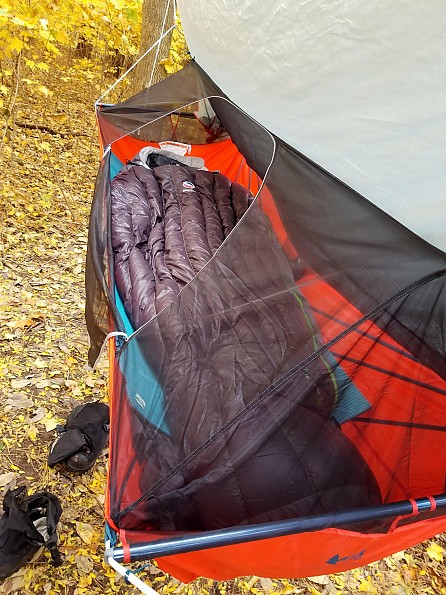
Packability:
The system rolls up into a nice 5" x 16" (15 x 50 cm). Each end of the hammock has a pole that separates in the middle and collapses. You just roll up the hammock around the poles.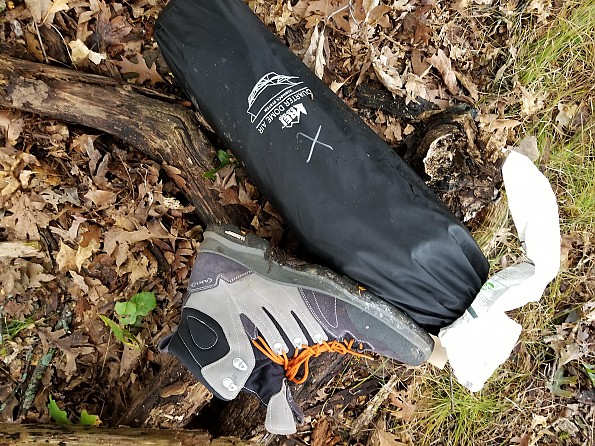
Ease of Use:
I’ve set the hammock up and slept in it on 7 outings now and each time, the parts and components work as expected. I’ve been thoroughly impressed with its simplicity-to-effectiveness ratio. If you set up a traditional hammock with a bug net and tarp, it takes more time than the Quarter Dome Air.
You can quite easily shake out debris from the hammock by rotating it on its side and shaking it in a wavy motion. 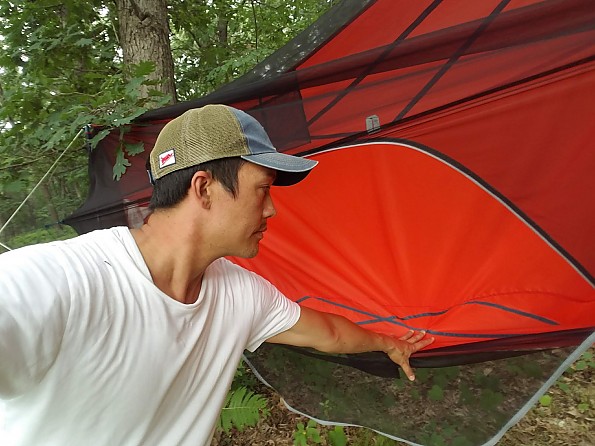
Features:
The clever drawcords really are an interesting piece of engineering. They rely on friction to keep them in place. I am impressed when developers utilize low maintenance technologies in effective ways.
The zipper is lightweight. Even though it's not beefy, I haven't had any concerns that it would break or split. I sense that it will continue to work properly if I treat it with respect. 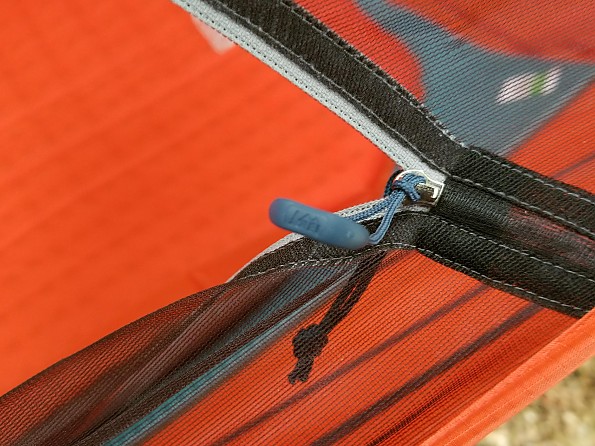
I will say that it's wise to unzip the door all the way before entry/exit so you are not stressing the zipper. If you try to unzip it only 2/3rds and crawl in/out, I think that would create too much tension and risk a tear.
The guy lines use a plastic mold called a “tension lock”. The cord rests in a valley of the molding and adhere through tension. I’ve noticed that the bug net tension locks sometimes slip unless you take precaution to really wedge the cord into the lock.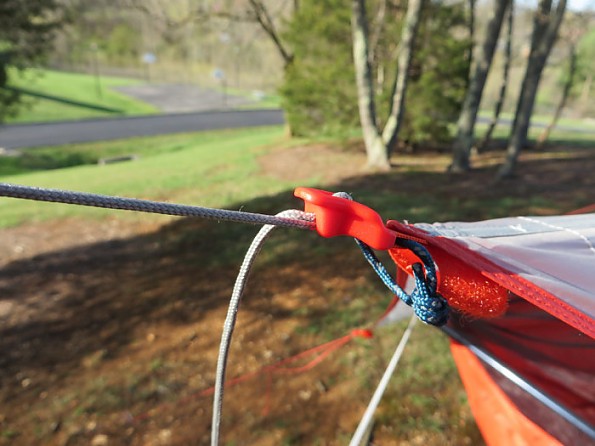
The corners are rounded plastic hubs. The load bearing cords run through them. They have no sharp corners so they are less likely to create wear on the cords. 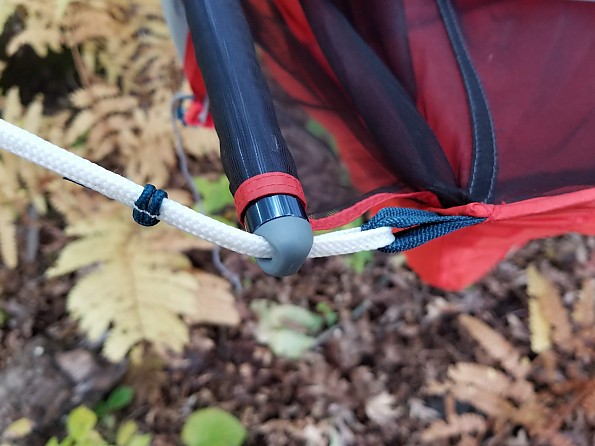
Construction and Durability:
I feel that the system does what it sets out to do; give the user a great night’s sleep, keep you dry, and keep the bugs out. The nylon hammock is as durable as any other hammock that I’ve used. The netting is the same type you’d see in an equivalent quality tent. The tarp is lightweight and reinforced to give it the strength you’d need under normal circumstances.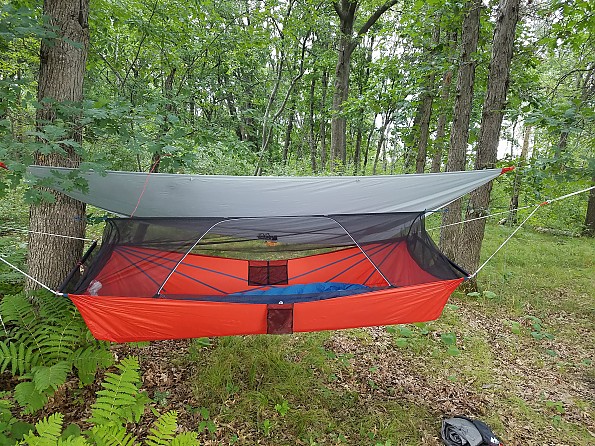
Conclusion:
When you consider the weight relative to performance, I think that the Quarter Dome finds a sweet spot in the hammock market. Since purchasing the Quarter Dome Air, I’ve seen some other interesting models emerge on the market. I will be interested to see how they fare against the REI Quarter Dome Air but compared to the traditional parachute double hammock, I think that the Quarter Dome has my vote.
Source: Bought it at the local co-op garage sale.


